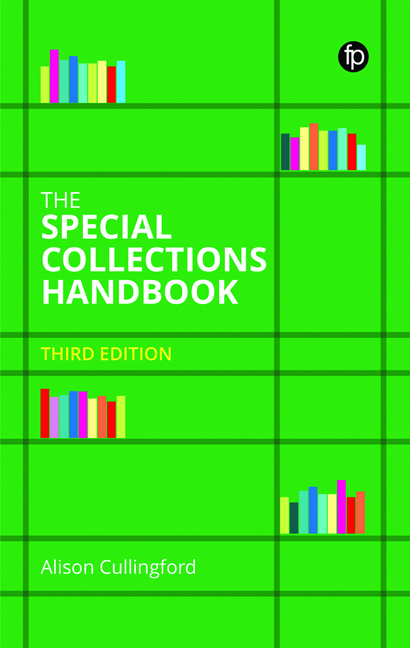Book contents
5 - Cataloguing, Description and Metadata in Special Collections
Published online by Cambridge University Press: 28 April 2022
Summary
Introduction
In this chapter we discuss the vital first step in bringing Special Collections to users: creating metadata (cataloguing, archival description).
It covers:
1 Cataloguing, some terminology, ethics and why it is so important.
2 Standards and codes for cataloguing rare books.
3 The changing landscape: systems, infrastructure, linked and open data, discovery.
4 Archives and manuscript cataloguing.
5 Cataloguing maps, music, objects, art and more.
6 Metadata for digital objects and crowd-generated metadata.
7 Controlled vocabularies.
8 Classification, identification, labelling and marking.
9 Historic and legacy catalogues.
10 ‘Hidden collections’ and how to tackle them.
11 Suggestions for further reading and useful websites.
Terminology and key concepts
Metadata is ‘data about data’: information that makes it possible to find and use data. Metadata creation is based around the use of standards and codes, which produces searchable and predictable results and allows metadata to be shared and reused.
In libraries, cataloguing is the process of metadata creation. A catalogue is the end result, a searchable collection of catalogue records. I use ‘cataloguing’ throughout this chapter, unless referring to non-book cataloguing, as this reflects sector use.
Library cataloguing encompasses several activities, explained below:
• descriptive cataloguing
• subject cataloguing
• authority control
• encoding.
Archives often call metadata creation archival description; the results are known as descriptions or finding aids.
The term processing is often used, especially in the USA, to cover cataloguing of all kinds, plus the other activities required to make materials accessible.
PAS 197 (British Standards Institution, 2009) uses the term collections information, which includes metadata plus other important information about collections such as the details of loan arrangements. The museum term documentation covers similar concepts.
Crosswalks map similar elements in different metadata standards onto each other. The match may not be perfect because different standards record and code information in different ways, but crosswalking enables users to search metadata brought together from many sources.
To aid understanding, I discuss cataloguing of books, archives, etc., separately, but note growing convergence between standards and systems. The world of metadata is a dynamic one in which librarians are innovating to bring collections to wider audiences.
Importance of cataloguing in Special Collections
Cataloguing enables users and staff to find out about the collections and locate what they need.
- Type
- Chapter
- Information
- The Special Collections Handbook , pp. 113 - 144Publisher: FacetPrint publication year: 2022



